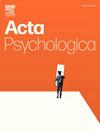Self-diagnosis in the age of social media: A pilot study of youth entering mental health treatment for mood and anxiety disorders
IF 2.1
4区 心理学
Q2 PSYCHOLOGY, EXPERIMENTAL
引用次数: 0
Abstract
Aim
To understand young adult patients' perspectives around the importance of mental health diagnoses and use of online material to self-diagnose.
Methods
Prior to first appointment with a clinician, 57 patients at First Episode Mood and Anxiety Program answered questions about viewing mental health content online. They were asked their opinions regarding the importance of a diagnosis and if they believed they had a diagnosis not previously given by a clinician. Participants also completed the Social Media Engagement Scale for Adolescents (SMES-A).
Results
All participants reported viewing mental health content online, and social media sites were more commonly viewed than academically-oriented sites. Value placed on diagnosis was correlated with frequency of viewing mental health content online. Most patients reported believing they had diagnoses that were not previously given by a clinician (i.e., a self-diagnosis). Of these, most indicated social media contributed to this belief. Self-diagnosis was correlated with frequency of viewing mental health content on YouTube as well as score on the SMES-A.
Conclusions
Young adults seeking mental healthcare indicated that information gleaned from social media was often used to self-diagnose. A diagnosis was found to be important for youth seeking mental health treatment and social media use appeared to be an associated factor. This research highlights attitudes about social media and diagnosis in youth entering mental health treatment.

社交媒体时代的自我诊断:一项针对青少年进入情绪和焦虑障碍心理健康治疗的初步研究
目的了解青年患者对心理健康诊断的重要性及在线资料在自我诊断中的使用情况。方法在首次与临床医生预约之前,57名参加“首发情绪与焦虑项目”的患者回答了有关在线观看心理健康内容的问题。他们被问及他们对诊断的重要性的看法,以及他们是否认为他们之前没有得到临床医生的诊断。参与者还完成了青少年社交媒体参与量表(sme - a)。结果所有参与者都报告在网上浏览心理健康内容,社交媒体网站比学术网站更常被浏览。对诊断的重视程度与在线观看心理健康内容的频率相关。大多数患者报告说,他们认为自己的诊断以前没有由临床医生给出(即,自我诊断)。其中,大多数人表示社交媒体促成了这种看法。自我诊断与在YouTube上观看心理健康内容的频率以及在sme - a上的得分相关。结论寻求心理保健的年轻人表示,社交媒体上收集的信息常用于自我诊断。研究发现,对于寻求心理健康治疗的青少年来说,诊断很重要,而社交媒体的使用似乎是一个相关因素。这项研究强调了进入心理健康治疗的青少年对社交媒体和诊断的态度。
本文章由计算机程序翻译,如有差异,请以英文原文为准。
求助全文
约1分钟内获得全文
求助全文
来源期刊

Acta Psychologica
PSYCHOLOGY, EXPERIMENTAL-
CiteScore
3.00
自引率
5.60%
发文量
274
审稿时长
36 weeks
期刊介绍:
Acta Psychologica publishes original articles and extended reviews on selected books in any area of experimental psychology. The focus of the Journal is on empirical studies and evaluative review articles that increase the theoretical understanding of human capabilities.
 求助内容:
求助内容: 应助结果提醒方式:
应助结果提醒方式:


